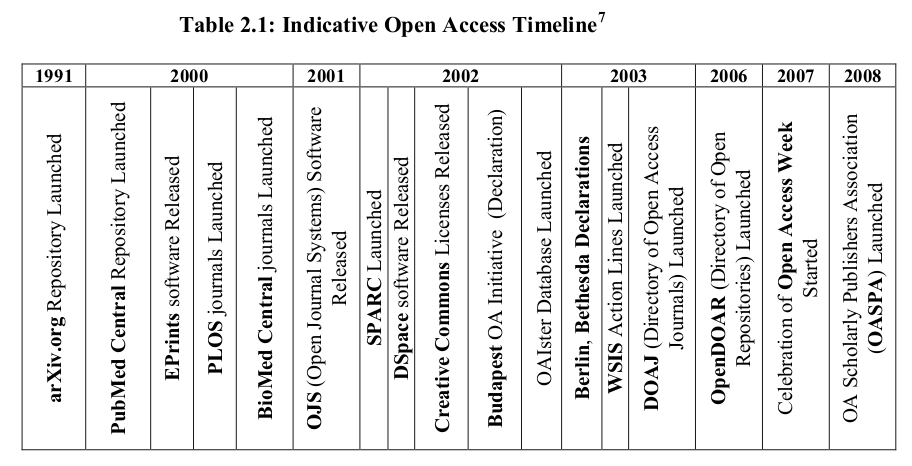2.4 Open Access – Evolution
OA movement is a worldwide phenomenon to mitigate challenges faced by the global libraries and research institutions related to ‘serials crisis’ – a spiraling effect of constant increase in subscription cost of many scholarly journals and exponential hike of online access fees of e-journals in 1990s that led to cancellation or reduction of subscriptions of many over-priced serials due to budgetary limits. OA initiatives have tried to provide initially Gratis OA and later Libre OA to scholarly literature. The first ever formal OA repository launched was the arXiv.org in 1991 which helped researchers in self-archiving of their electronic preprints of scientific papers in the fields of physics, mathematics, computer science, quantitative biology, quantitative finance and statistics.

As indicated in Table 2.1, there were many events in the first decade of the 21st century that marked the emergence of OA literature as a substantial mode of scholarly communications. Many stakeholders came forward in building institutions and resources for shaping up the global OA movements. Some of the institutions emerged during this decade are namely, Public Library of Science (PLOS), BioMed Central (BMC) – publishers of peer-reviewed OA journals, the Scholarly Publishing and Academic Resources Coalition (SPARC), and Open Access Scholarly Publishers Association (OASPA). Most importantly, the Budapest, Berlin and Bethesda (BBB) OA declarations or statements got signed by the scholarly communities, particularly by the funding agencies, research councils, learned societies, institutions, universities, and scientists for the OA dissemination of public funded research.
